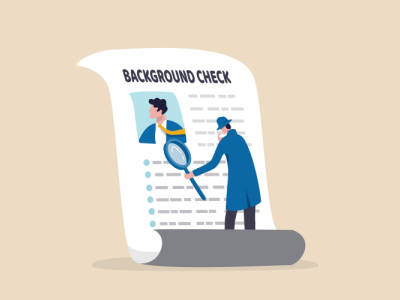Over the last few decades, background checks have become an integral part of the hiring process all over the country. According to a 2022 PBSA survey, at least 94 percent of American employers conducted at least one type of background screening in the last year. Screening candidates both efficiently and effectively can help companies craft a strong and reliable workforce. By doing so, companies can keep the potential risks associated with unsuitable candidates to a strict minimum.
While there is no lack of understanding among companies as to why their background screenings must be efficient, organizations often need help with how to approach a comparison of different vendors or how to score the vendors they currently have. What does “efficient” even mean in the context of background screenings anyway? Does it mean fast? Cheap maybe? Or does it mean without error?
While it may be convenient for some to implement quick and cheap background checks, it is never worth risking brand image and, more importantly, the safety of employees and customers. Let’s take a look at four metrics that companies can safely use to measure the performance of their background screening providers in 2024.
Turnaround Times
Turnaround times are traditionally the most commonly used metric when organizations need to select and evaluate background screening providers. Turnaround times measure the time it takes to conduct a screening. A criminal background check – whether a county or statewide search is conducted – should on average not take more than one business day to receive results. Other types of checks will often come with different turnaround times.
Companies that focus exclusively on the median as a measure of efficiency risk losing sight of a lot of valuable information. For example, a vendor could have an average turnaround time of less than two days but have an estimated 20% of orders taking a week’s time. It is best for companies to evaluate vendors based on more than just the median turnover time.
Verification Success Rates
Checking criminal records is, to a large extent, automated directly with the court into the same systems that are available on-site. For some screening criteria, the approach is more “high-touch,” however.
As part of many background checks, candidates are asked to provide information on their past education and employment. While the majority of Americans provide correct information on their resumes, there are still about five percent who report lying on their resumes. Those that provide incorrect information, lie mostly about their work experience and dates of employment.
Background screening providers that reach out to employers and educational institutions and successfully obtain the verification have what is called a high verification success rate. Within the industry, a 90 percent verification success rate is considered solid.
Some providers may even split up verification success rates and communicate their rates for education verification and employment verification separately, for example. Regardless of the chosen method, firms with high verification success rates possess qualified, trustworthy workforces.
Amount of Disputes
Job applicants who feel a mistake was made in checking their backgrounds will often dispute the findings. The percentage of background screenings that end up in disputes is an illustration of the accuracy of the background screening process.
Any dispute percentage that is lower than 0.05 percent can be considered very low (meaning the background screening process was very accurate). If the dispute percentage falls within this range, it serves as a strong indicator of the reliability and precision of the screening process. This highlights the background check’s effectiveness in accurately assessing an applicant’s history.
Service Metrics
There is no use in working with a background screening provider who performs high on some key metrics, but is not responsive when there are concerns or questions that need to be addressed.
One relevant metric is the percentage of client service phone calls that are answered within two hours. Any number above 90 percent is considered satisfactory. Another metric in the same vein is the percentage of client service phone calls and emails that are resolved through the first contact. Here, a score of 80 percent or higher is considered very good.
Bottom Line
There is a wide range of metrics to choose from when selecting and evaluating background screening providers. In this article, we listed four metrics (turnaround times, verification success rates, disputes, and client service metrics) that organizations can safely rely on to evaluate the performance of their vendors in 2024. A company should shop between different vendors for background checks and choose one that best fits their screening process needs.
Jeff Ernste is Chief Sales and Marketing Officer with Minneapolis-based Orange Tree Employment Screening. For more than 30 years, Orange Tree has provided technology-enabled background screening, drug testing, and occupational health services for clients nationwide—more info at www.orangetreescreening.com.

